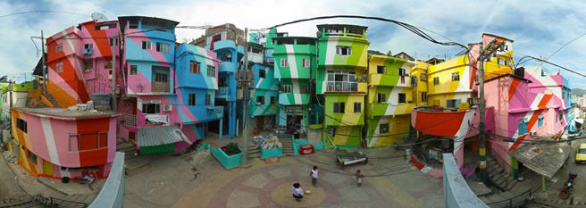The Back to Rio project has transformed how people see one of Rio de Janeiro’s most feared favelas. It turned grey, unsafe streets into huge works of public art by painting the fronts of houses in bright colours and bold designs. This changed not just how the area looks, but how the people living there feel—and how outsiders see them.
The project began when two Dutch artists painted a mural in a favela in 2006. Over time, they involved the local community, training and paying young people to repair and paint their homes. Eventually, they created a 7,000m² artwork across 34 buildings. The goal was not just art, but to bring hope, skills, and pride to a place long known for violence and poverty.
Despite delays due to gun violence, the project continued in safer and more visible areas. It has helped residents learn practical skills like plastering and painting, and some now earn money guiding tourists or making art. The project is funded mainly through crowdfunding, donations, and private support.
What makes it special is that it uses art—not government or big development agencies—to inspire change. It also draws attention to the community in a positive way. The project has made headlines worldwide and has even inspired similar projects in Haiti, the U.S., and Mexico.
Locals now feel more pride in their neighbourhood. Bright colours have replaced fear, and young people have new skills and opportunities. Though safety and funding remain challenges, the project proves that creative, community-led work can make a real difference—even in the most difficult places.














